Luminous Ceilings, brand messages building, Media Façade Project News, Design Property Images
Luminous Ceiling Design
Media Façades Architecture Information
9 Dec 2010
Article by Thomas Schielke, Germany
Media facades : When buildings start to twitter
Luminous Ceiling Design Film on YouTube
The timeline depicts international media facades with their different artistic, social or brand messages up to interfaces like iPhone Apps or brain sensors for public participation. The movie is a shortened version of the lecture, “The semiotics of media facades – When buildings start to twitter” that was presented at the Parsons The New School for Design in New York in October.
Liverpool University Active Learning Laboratory : LED Display
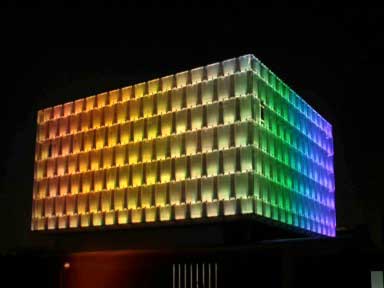
photo : Joseph Smith
N Building, Tokyo, Japan
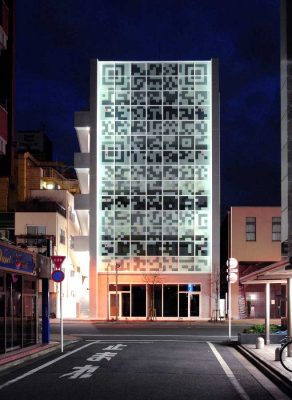
photo : Yuki OMORI
Dynamic Building Facades
Luminous tweets and retweets
During the day, façade structures with their windows and material combinations grant a specific building image to the public. However, after sunset electrical light is the medium for an architectural image. The light appearance sends an atmospheric signal to the citizens like hang on in front of an asleep structure, look at an inviting but static façade or enjoy a vivid architecture sharing short stories like tweets.
In the last decade, media facades have become a widespread element for luminous short messages. They establish a network between the building owner and the citizens, sometimes driven by aesthetical debates, other times by commercial intentions to avoid traditional light advertisement.
The pursuit of persuasion by way of big screens gives the impression that size receives a higher relevance than content, comparable with the large amount of trivial tweets in Twitter. Various media facades appear as monumental monologues repeating a fixed animation daily. A few facades use signals from the environment and transform them into a play of light and shadow.
Others emerge as urban dialogues when buildings show combined moving pictures. Some even allow people to send messages to the building to receive luminous retweets. They turn the city into a community following the dialogue and with the respective Apps may possibly even gain a following community worldwide.
Previously:
4 Mar 2010
The aesthetic of luminous ceilings : From the image of heaven to dynamic light
Luminous ceilings provide spacious room impressions and can provide different types of lighting. Besides this, they are, however, also metaphors of the natural sky and a mirror of an aesthetic and architectural debate.
The historical observation of ceilings reveals that the image of heaven, which reached a theological culmination in the luminous Renaissance stucco techniques, turned into large-scale light emanating surfaces. Even if the luminance of contemporary LED screens has increased intensely and thereby creates a point of attraction, designers still look to establish a pictorial language for an impressive appearance.
The question hereby arises whether the evolution of the luminous ceiling can be understood as a response to image techniques of their time or as technological experiments? How does digital image production influence architectural design today? With artificial light and especially with LEDs and video software the ceiling appears on the one side dynamically and dramatic but on the other side geometrically flat with a very diffuse space appearance which lacks the modelling of natural sky. This would lead to the discussion whether luminous ceilings suppress the aspect of “play of brilliants”?
Busan Cinema Center, South Korea, 2010. Moving images on the cloud shaped roof converts the building into a gigantic dynamic display. Architecture: Coop Himmelblau:

image © Isochrom.com, Vienna
Art and architectural theory methods are linked to building history and describe the evolution of luminous ceilings from the antique to the present with a focus on the last century and contemporary projects. The case studies include international projects that range from cultural and retail to administration areas by architects, artists and lighting designers. Contemporary developments like scenic lighting concepts with dynamic colour are analysed for their specific visual language and aesthetic quality as well as for basic design strategies.
From the antique opaion to diffuse membranes
The historical observation reveals the evolution of images of heaven in the Renaissance to actual light from the ceiling. One of the first examples in which light is integrated within the ceiling can be found in the German neo-gothic Hohenschwangau Castle where oil lamps behind the ceiling surface create the real light for the painted starry sky – like modern downlights with light from holes. An early case of a luminous rectangle was designed by Frank Lloyd Wright for Fallingwater.
Larger floor spaces in skyscrapers induced an artificial sky on the basis of an illuminated ceiling structure with intense light patterns. The membranous technology and fluorescent lamps smoothed the way of a generation with very uniform luminous planes.
Congress Centre, Lucerne, 2000. Giant cantilever metal roof reflects the sky mirrored in the lake. Architecture: Jean Nouvel:
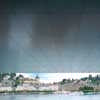
image: www.arclighting.de
Inspiration from light art
The light art installations have prepared a path of temporary explorations on light and ceiling. The approach of a flat luminous ceiling was implemented in El Lissitzky Proun Space to formulate new ideals with a strong link to his paintings. Robert Irwin utilized an old skylight to play with perception by creating a specific light pattern with fractured light.
A simple but much stronger focus on skylights is revealed in the Skyspaces from James Turrell which capture the real sky. Jenny Holzer started to use light dynamically to transform the ceiling at the Berlin Neue Nationalgalerie, by displaying flowing text across it, letting the ceiling appear either concave or convex.
The advent of LED creates dynamic pixel screens
A new generation of luminous ceilings arose with LED technology. The ceiling was used less for the functional task of ambient lighting as it was used to change the colour for different atmospheres. In combination with a video camera the LED ceiling can reflect the movement of clouds in the sky.
The chance to combine luminous ceilings with video software enabled new steps towards ceilings that worked as dynamic luminous screens. The projects lead to impressive virtual spaces when extended to the whole room or street. The Cartesian handling of space is left behind when the luminous screen is attached to the underside of a cloud shaped roof.
URL movie at youtube: https://www.youtube.com/watch?v=NEPRtjKMl3I
Luminous Ceilings information from Thomas Schielke
Lighting Design & Thomas Schielke, Germany
Background
This movie is a shortened version of the paper which was presented at the Professional Lighting Design Conference in Berlin in 2009.
The findings here are a result of a research project at the University of Applied Sciences in Bochum, Germany in the department for Building Design, Architecture Theory and Building History.
Thomas Schielke CV
Thomas Schielke, studied architecture at the University of Technology in Darmstadt, Germany. He has been in charge of the didactic and communication division at the lighting manufacturer ERCO since 2001 where he designed an extensive online guide for architectural lighting, leads lighting workshops and publishes internationally articles on lighting design and technology. He is author of the book “Light Perspectives – between culture and technology”. This book covers the actual qualities of light, the relationship between light and space, finally, the dimension of light as it relates to culture – based on paired terms to explore the design dimension of light. Additionally, he is a lecturer at several different universities.
Text: Thomas Schielke, Germany
Lighting Design Articles
Beverly Center Building Lighting
Lighting Design: Speirs + Major
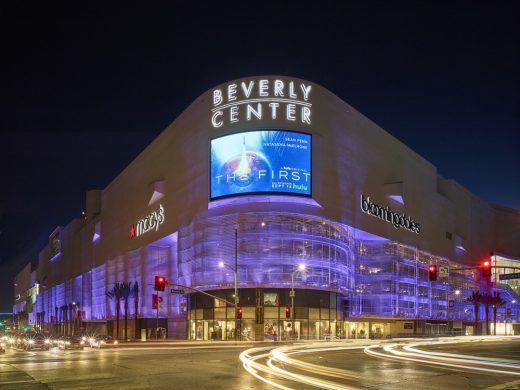
photo © John Linden
Beverly Center Lighting
Speirs + Major Lighting Designers
Fortnum & Mason London Lighting,
How to Use Lighting, Space and Material in Architectural Design
The Etch House, Honor Oak, Lewisham, South London
Design: Fraher Architects
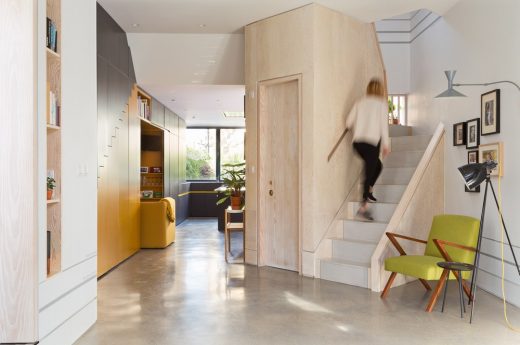
photo : Adam Scott
Honor Oak Home Extension
Comments / photos for the Luminous Ceilings Architecture Article page welcome




